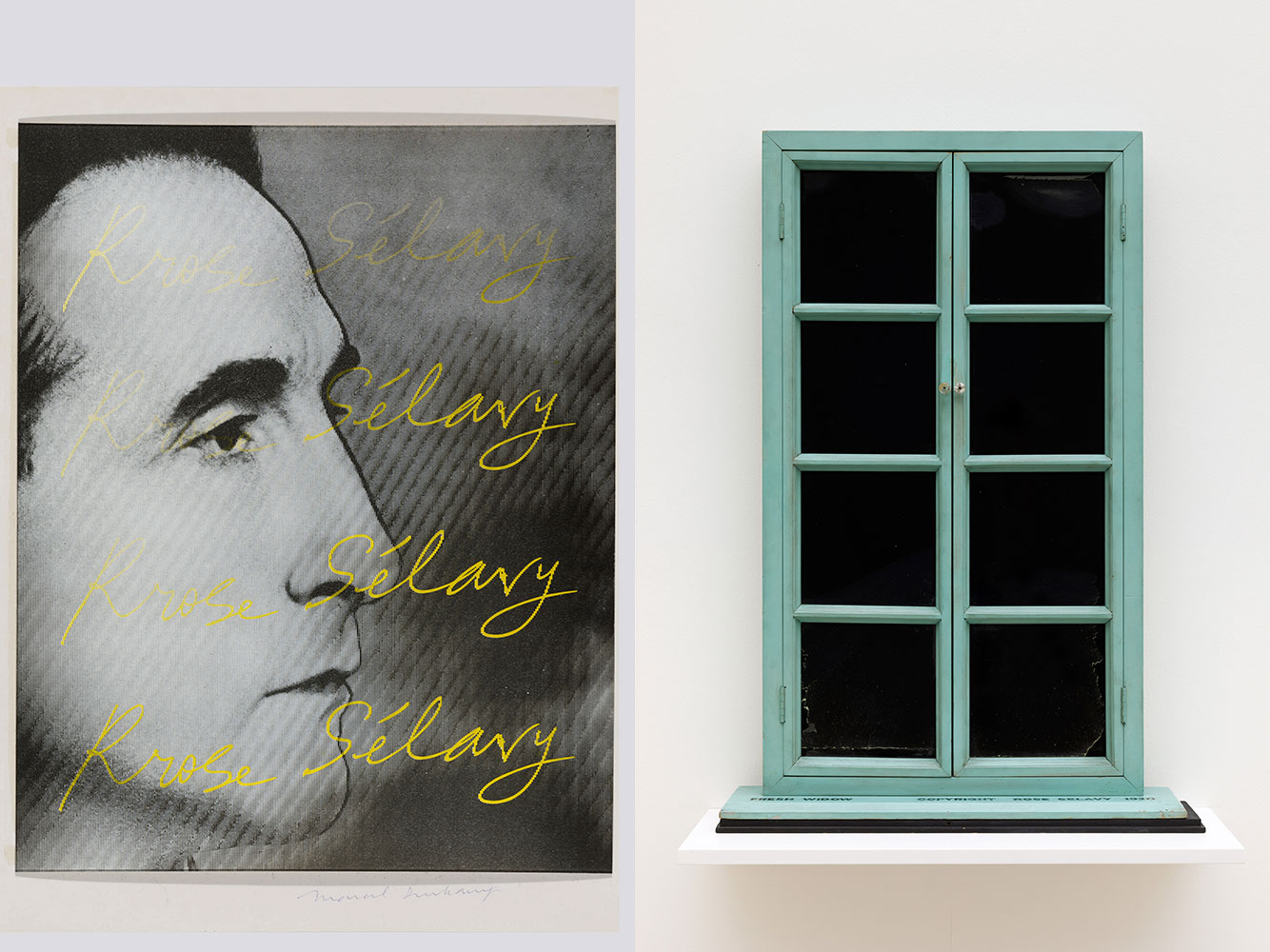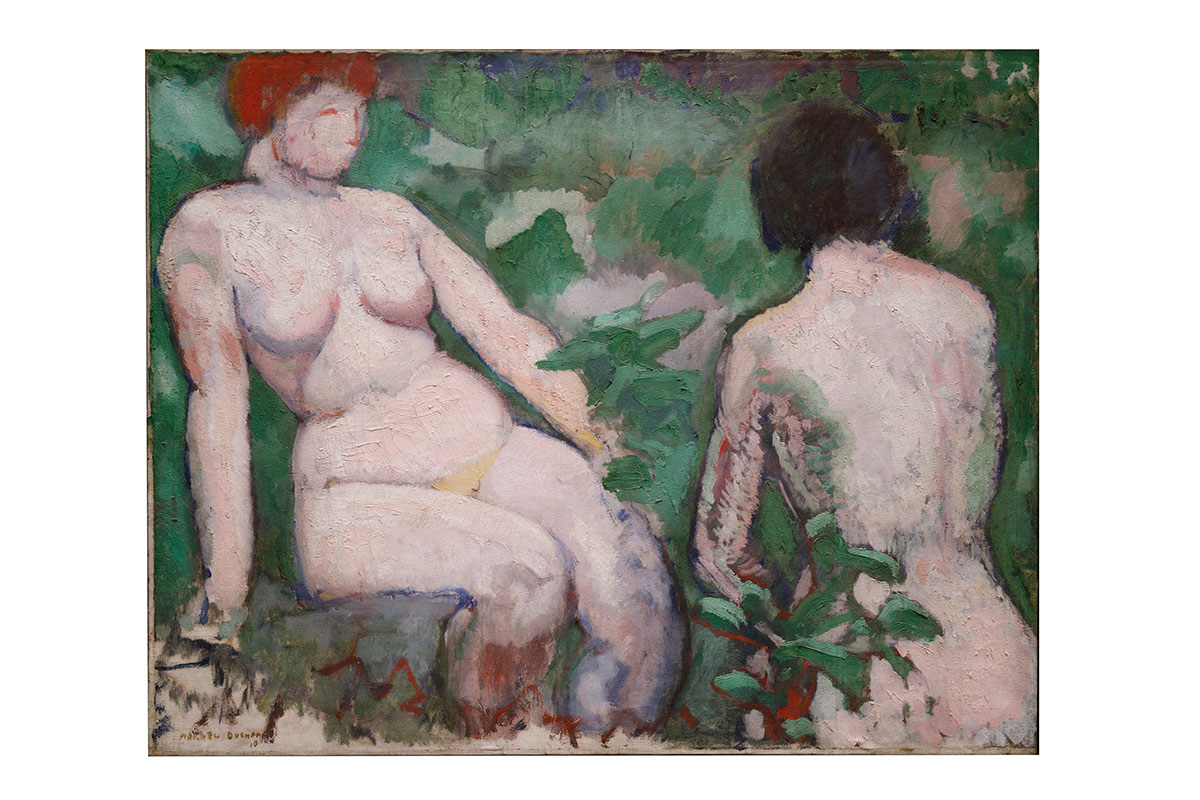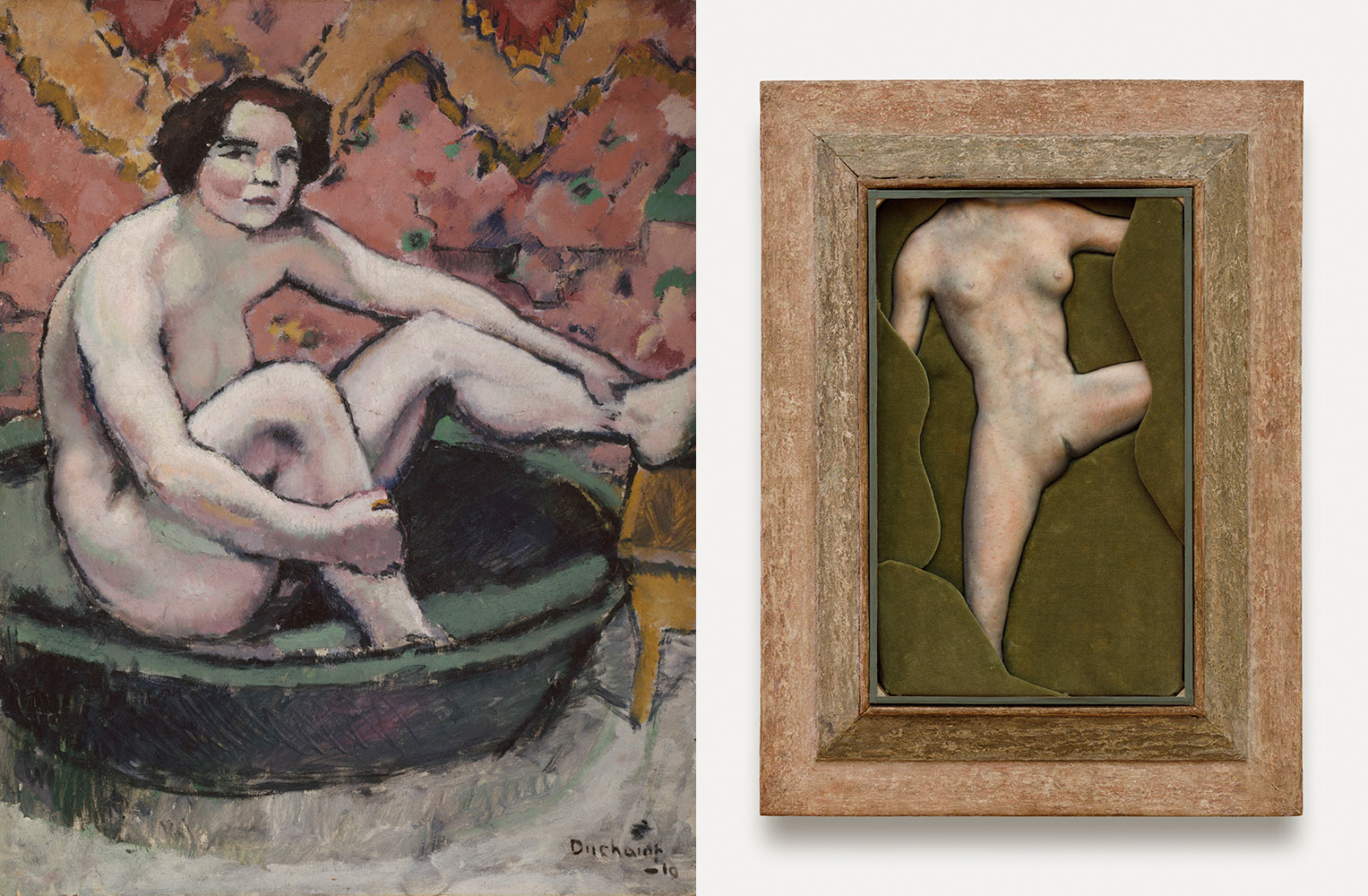TRIBUTE: Marcel Duchamp, Part II
 Marcel Duchamp is associated with many artistic movements, from Cubism to Dada to Surrealism, and paved the way for later styles such as Pop (Andy Warhol), Minimalism (Robert Morris), and Conceptualism (Sol LeWitt). A prolific artist, his greatest contribution to the history of art lies in his ability to question, admonish, critique, and playfully ridicule existing norms in order to transcend the status quo—he effectively sanctioned the role of the artist to do just that (Part I).
Marcel Duchamp is associated with many artistic movements, from Cubism to Dada to Surrealism, and paved the way for later styles such as Pop (Andy Warhol), Minimalism (Robert Morris), and Conceptualism (Sol LeWitt). A prolific artist, his greatest contribution to the history of art lies in his ability to question, admonish, critique, and playfully ridicule existing norms in order to transcend the status quo—he effectively sanctioned the role of the artist to do just that (Part I).
By Efi Michalarou
Photo: MMK Archive
The resistivity that distinguishes the oeuvre of Marcel Duchamp is unbroken, his questions are present: What is art? What constitutes an object? What is a subject? What unites and divides science and poetry? What defines our gender and our identity? With nearly 700 works divided in 32 thematic sections “Marcel Duchamp” is the first comprehensive exhibition in two decades to feature artworks spanning all phases of the artist’s oeuvre from 1902 to 1968. When Marcel Duchamp mounted the front wheel of a bicycle and straight fork on a white-painted kitchen stool in 1913, he had no idea what great importance art history would one day attach to the “Roue de bicyclette”. It went down in history as the first readymade and is meanwhile also considered the first kinetic sculpture. Duchamp experienced that it had a wonderfully calming effect to set the wheel turning and watch how the spokes blurred, became invisible, and then reappeared as the rotation slowed down. He talked about the wheel like a matter of minor importance—and we can believe he viewed it as such, because he initially made no effort whatsoever to do anything with it apart from what he described above. “Roue de bicyclette” derives its present-day significance from the fact that it stands for the origin of an idea: the idea of the readymade. The term “readymade” did not yet exist in 1913. When it first emerged in 1916, the status of the objects Duchamp had collected as readymades also changed retroactively. For “Apolinère Enameled” (1917/1965), Marcel Duchamp altered an advertising plaque for Sapolin Enamel industrial paints. To pay homage to his friend the poet Guillaume Apollinaire, he blocked out some of the large white plain capital letters of the company name and added others, so that the sign now reads “Apolinère Enameled” Manipulated as such, the title oscillates between English and French and can thus be read as an example of Duchamp’s wordplays with the two languages during his first stay in the United States. Spoken with English pro- nunciation, Apollinaire sounds like “a pole in air.” The artist signed the work on the bottom left-hand corner “[from] Marcel Duchamp 1916 1917.” On the back of the original version, he also inscribed the words “Don’t do that,” contradicting the manufacturer’s recommendation to clean the sign with a damp cloth when soiled. Apart from playing with language, Duchamp also painted the girl’s hair reflected in the mirror over the chest of drawers. This addition has often been thought to have sexual connotations which the bedstead at the centerof the image echoes Marcel Duchamp’s series of mirrors (each titled Miroir, 1964) can be categorized according to the wider contexts of his oeuvre: readymades, indifferences, and questions of identity. More specifically, the mirrors can also be related to a very distinct line running through Duchamp’s art and life. While the readymades are plotted on this line before an abstract or abstracting visual language, the mirrors are a result of fleeing from the ostensible truth of photography, or rather the result of a fundamental criticism of photography itself. Today we know that photographs can lie, thanks not only to an analysis of the Nazi and Stalinist visual propaganda machines but also to the manipulated images used in advertising. Duchamp believed that his exploration of photography had to start, above all, with an investigation into its capacity to transform. Man Ray’s portraits charting Duchamp’s metamorphosis into Rrose Sélavy testify to this. One of the ways in which photography could achieve this transformation was by replicating the subject. For that reason, June 21, 1917—the day on which Duchamp, accompanied by Beatrice Wood and Francis Picabia, took a trip to the Broadway Photo Shop in New York—marks not just a date in his life but also in his art: with his friends, Marcel Duchamp had several portraits taken sitting in front of a mirror with multiple foldout mirror sections. In the late nineteenth century, the camera used here in combination with a system of hinged mirrors made it possible to produce high-quality photographic portraits in large numbers. This “multigraph” technique was also employed in France in order to produce a series of portraits of criminals with only one exposure. The role of the photographic subject was thus reduced in scope and mechanized—a process that suited Duchamp in every respect. Postcards had first been introduced to Germany in the 1890s, while the United States Congress had passed laws at the turn of the twentieth century permitting photography on one side of a postcard with the other reserved for the address. This heralded the dawn of a new industry, and one in which Duchamp would become involved by producing his own postcards. Set against this backdrop, the 1964 mirrors represent both a late but innovative form of readymades and a critique of photography. In contrast to the earlier ready-mades, Duchamp broadened his methodology to devise a completely new concept for these signed mirrors: a ready-made that is constantly evolving and actively interacts with the surrounding space and with the viewer. The sig-nature of the artist accompanies each view of the face reflected in the mirrors. When Duchamp wrote his name on these mirrors, he declared: “I am signing future ready-made portraits”. Duchamp devised an entirely new genre of portraiture, a work of art that was constantly changing and held infinite possibilities. He allowed the viewer to complete it by adding their own likeness to this reflecting wall. It is easy to retrace the advent of chance in Duchamp’s work concept, from “3 stoppages-étalon” (1913–14)—a kind of prototypical readymade related to his composition “Erratum Musical” 1913), which already alludes to an accidental print- ing error in its title—to photographic works such as “Piston de courant d’air” (1914). This work can be considered the work in which Duchamp first deliberately incorporated the concept of chance into his artistic process. When asked in 1961 which of his works was most important to him, this is the one he would name. It was in this work, he said, that he had tapped the mainspring of his future. It had provided him a means of escaping art’s traditional methods of expression, thus paving the conceptual way for the ready-made. A few years later, in 1964, he would add that he carried out the experiment of the “3 stoppages-étalon” to “imprison” forms obtained through “his” chance. At the same time, he explained, the fall of the three threads used for this work changed the unit of length, one meter, from a straight line to a curved line.
Photo Left: Marcel Duchamp, Rrose Sélavy in Wilson-Lincoln System, 1967, Art Collection Alychlo / Marc Coucke, Belgium, © Association Marcel Duchamp / VG Bild-Kunst, Bonn 2022, photo: Axel Schneider. Right: Marcel Duchamp, Fresh Widow, 1920/1964, Galleria Nazionale d’Arte Moderna e Contemporanea, Roma. Donazione di Arturo Schwarz, © Association Marcel Duchamp / VG Bild-Kunst, Bonn 2022, photo: Axel Schneider
Info: Curator: Susanne Pfeffer, Museum MMK, Domstraße 10, Frankfurt am Main, Germany, Duration: 2/4-3/10/2022, Days & Hours: Tue-Sun 11:00-18:00, www.mmk.art



Right: Marcel Duchamp, Étant donnés : 1° la chute d’eau, 2° le gaz d’éclairage (Given: 1. The Waterfall, 2. The Illuminating Gas), 1948-1949, Moderna Museet, Stockholm, © Association Marcel Duchamp / VG Bild-Kunst, Bonn 2022, photo: Axel Schneider

Center: Marcel Duchamp, Rotorelief (Optical Disc), 1935, Art Collection Alychlo / Marc Coucke, Belgium, © Association Marcel Duchamp / VG Bild-Kunst, Bonn 2022, photo: Axel Schneider
Right: Marcel Duchamp, Yvonne Duchamp in a Kimono, 1902, Association Marcel Duchamp, © Association Marcel Duchamp / VG Bild-Kunst, Bonn 2022, photo: Axel Schneider
